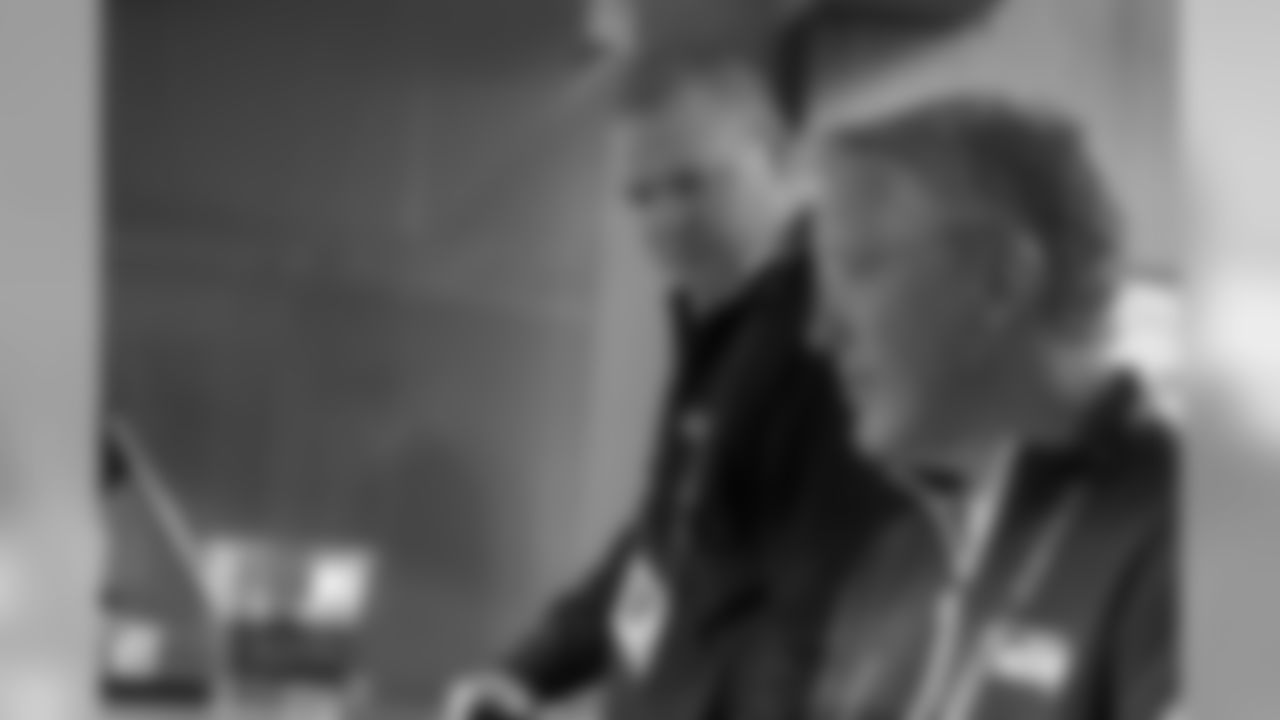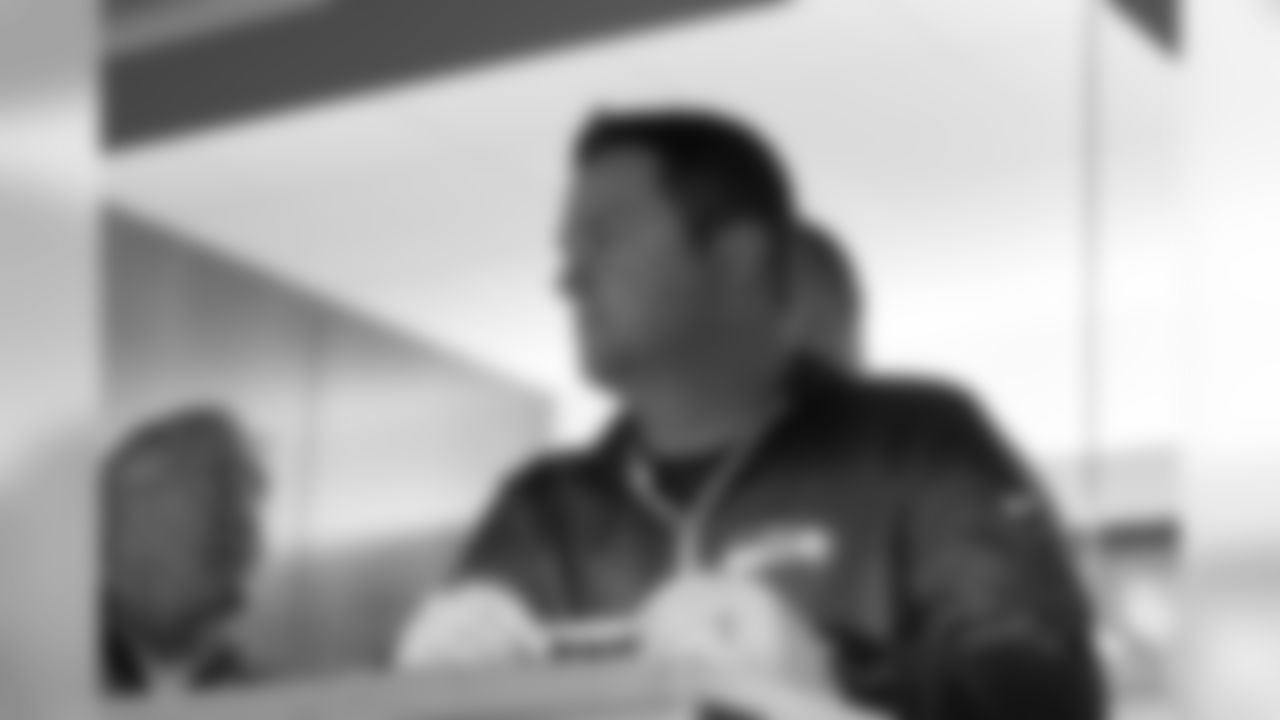The weeks leading up to the NFL Scouting Combine are always an important time for Seahawks coaches and scouts. While members of the scouting department spend almost their entire year preparing for the draft, coaches are focused on the season at hand throughout summer and fall, and only after the season ends can they turn their attention to players who might help the team in the future.
Every offseason, Seahawks coaches and scouts get together in February to prepare for the combine, which takes place this week in Indianapolis, and for the draft process as a whole. General manager John Schneider and head coach Pete Carroll pride themselves on running an organization with no walls, meaning coaches are very involved in the draft process. Because of that, and because the Seahawks made significant changes to the coaching staff this offseason, this period of draft preparation is particularly important this year.
The Seahawks had the same offensive coordinator, Darrell Bevell, and offensive line coach, Tom Cable, from 2011 to 2017, and while there has been change at defensive coordinator with past coordinators moving on to head coaching jobs, Carroll has a big hand in the defense, so there has been continuity there as well. But with Brian Schottenheimer taking over as offensive coordinator and Mike Solari at offensive line coach, February has been crucial for the Seahawks as the scouting department has met with coaches, and in particular those two new offensive assistants who will have a lot of influence on that side of the ball.
"This is a unique year," co-director of player personnel Scott Fitterer said. "We still have the same head coach, same general manager, but we're going to start to learn, what does Brian Schottenheimer want? What does Mike Solari want? How does this change our personnel, especially, say, on the offensive line? Are we looking for a different type of athlete now? What are we looking for in a running back? Does it change anything at receiver? We're all familiar with (new defensive coordinator Ken Norton Jr.), so we kind of know what he wants, and Pete has such a strong influence on the defense, so personnel-wise we know what we want on defense… It's just going to come down to communication between the two staffs. They tell us what they need and we go and we find it for them.
"We need to figure out, what do they want? So far there has been great communication, they're very easy to talk to."
So what can coaching changes mean for a player-personnel staff? As co-director of player personnel Trent Kirchner noted, some offensive coordinators might favor different formations more than others, putting more emphasis on a particular position group. Or even if two different offenses rely heavily on tight ends, for example, some coaches might look for different styles of player at that position. When it comes to the offensive line, Seahawks scouts need to know if Solari is looking for a different type of athlete than Cable preferred.
"Those are the biggest issues for us," Kirchner said. "We've got to transition from, 'This is what we were looking for all season long' to, 'Now we're looking for this.' This is the first time in seven years that we haven't been looking for the same thing every year. We knew, for the most part, what our coaches were looking for, so this is the first year in a long time where we've had to transition into learning something new. It's going to be very important for us to communicate with them as much as possible, make it as clear as possible what their expectations are for us. We know it's still fast, tough, smart, reliable guys, but now it's, what physical attributes are we looking for?"
One thing that helps the Seahawks during this key part of their offseason is that aforementioned philosophy of having no walls between the coaching and scouting departments. On some teams, the GM and scouts would evaluate talent, decide who to draft, then leave it up to coaches to make it work with those players, but the way Carroll and Schneider operate, coaches have a real say this time of year in shaping the future of Seattle's roster.
"The biggest thing is catching the new coaches up to our process," Fitterer said. "How we handle the spring, how we handle interviews at the meetings, how we include them. Then, again, what they want. That's the biggest thing. And what helps with that is that Pete and John aren't guarded. There's no walls. They encourage communication, so that makes it easier for scouts and coaches."
But while coaching changes have put extra emphasis on pre-draft meetings for the Seahawks, the goal of the combine is largely the same as it has always been, even if the event gets bigger every year. While events like the 40-yard dash and vertical leap get a lot of media attention, what matters most to teams is the medical information they get on players and what they can learn about players off the field in terms of who they are as people and as competitors.
"It has gotten so big, but it's still about the medical, it's still about getting to know the players," Fitterer said. "But it has grown quite a bit—they're letting fans in, it has become a media attraction. When we started, TV cameras weren't in there. It was basically just scouts and coaches inside; now it's totally different."
Spend a day operating behind-the-scenes with Seahawks general manager John Schneider and head coach Pete Carroll at the 2017 NFL Combine in Indianapolis, Indiana, where professional football's top prospects worked out and interviewed for the League's 32 teams.























